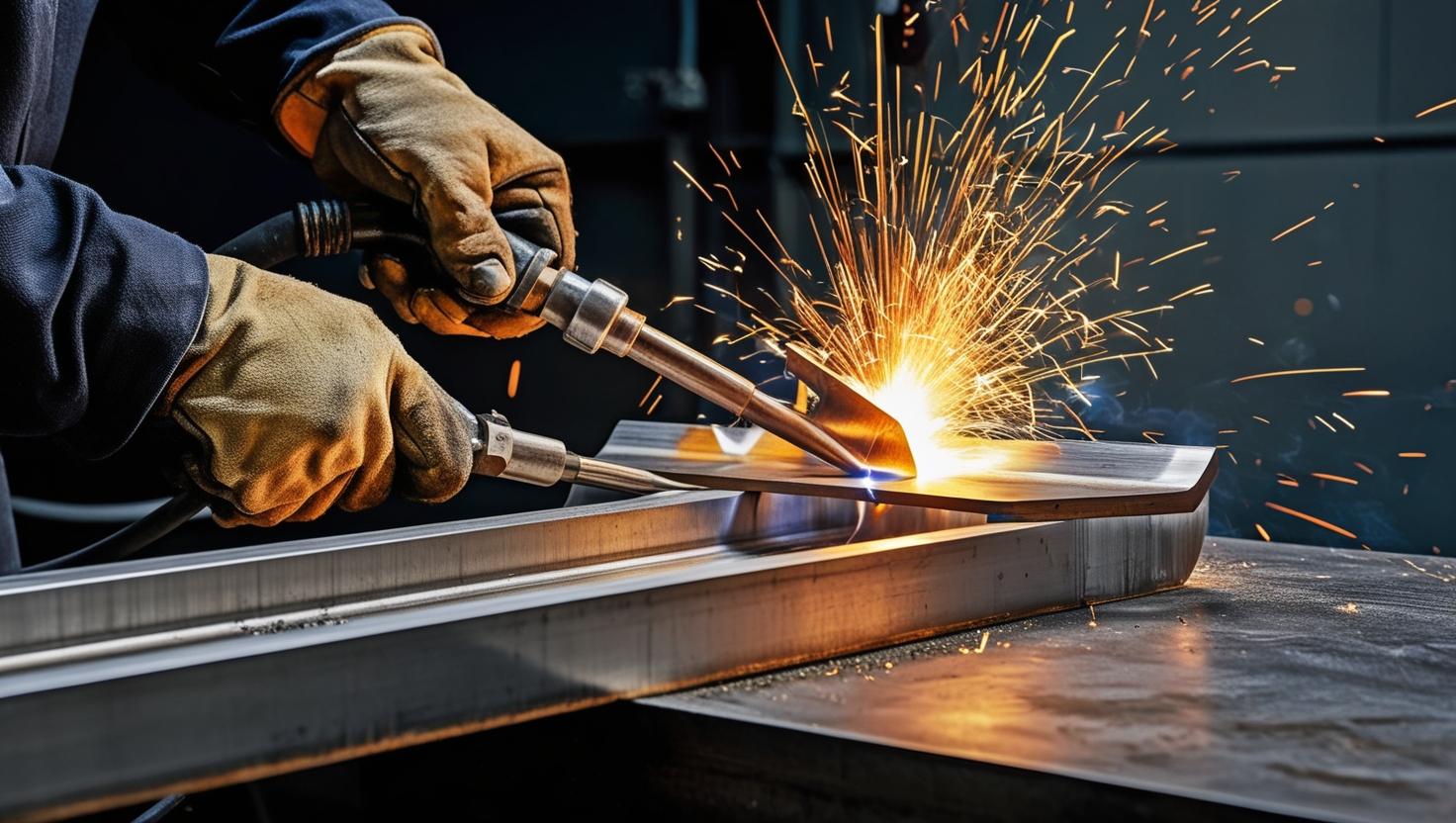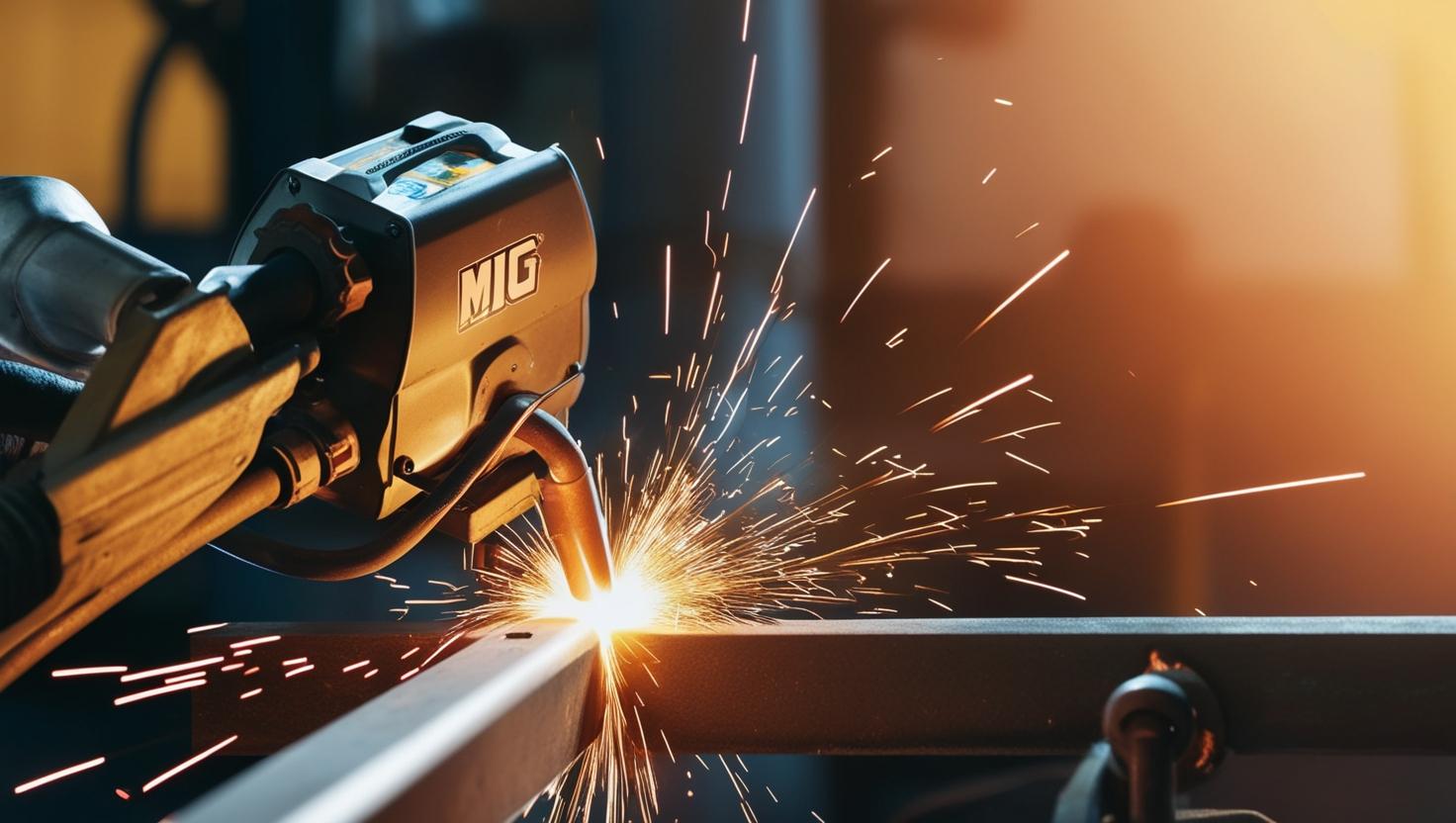Aluminum welding is a phenomenon that is often inquired by the metalworkers, people in sectors such as automobile, aerospace and construction. Aluminum is an element that belongs to metals, which is light, corrosion resistant, and malleable making the metal suitable for a variety of uses. Tuttavia, it is challenging to weld owing to some of the properties it possesses.

Understanding Aluminum’s Welding Challenges
Low Melting Point
Compared to steel, aluminum has low melting point 1,220°F (660°C) while the melting point of steel is 2,500°F (1,370°C). This makes it somewhat compromise its form especially when undergoing the welding process through heat since it is very much prone to melting.
High Thermal Conductivity
Aluminum conducts heat at a much faster rate than steel, in fact five times faster. It implies that heat loss is rapid from the welding area and in order to have a stable welding pool more heat input is needed and time also.
Oxidation
Aluminum reacts with oxygen to form a coherent layer of oxide when exposed to the atmosphere of the air. This particular layer has a higher melting point than the aluminum layer used at the base and must be scraped off properly to maintain proper quality welds. It is true that before welding aluminum, this oxide layer has to be cleaned or prepared in some way.
Can You Weld Aluminum?
Well, it is entirely possible to weld aluminum, and it is a relatively normal with regard to the widespread use in a variety practices. There exists a right and correct process and tools that, when applied the right way, you can easily get great weld joints on the aluminum.
Common Welding Methods for Aluminum
These are several welding processes that may be used on aluminum and each of them has some benefits and particular usage:
TIG: A popular approach to aluminum welding that can be mentioned is TIG welding or Gas Tungsten Arc Welding in accordance with its full name. It is more accurate when it comes to the production of high-quality welds. Welding has many types, but TIG is a frequently favored process when working with aluminum because of the following reasons.
Precision: TIG welding offers high precision due to strictly controlled weld pool, which permits the creation of complicated and detailed welds.
Cleanliness: It does not produce a lot of spatters and leaves a very neat appearance of the weld.
Flexibility: TIG welding can be done on medium thickness of aluminum.
MIG welding or Metal Inert Gas Welding
MIG welding or the Gas Metal Arc Welding is another method of welding aluminum known to be widely used. MIG welding is selected most often for the following reasons.
Speed: MIG welding is quicker than TIG welding, and this is because it is more suitable for use in largescale projects and for thicker materials.
Automation: MIG welding is very flexible and does not pose a big challenge when it comes to automation, this will make it suitable for use in most production.
Spot Welding
The spot welding is a resistance welding process which is primarily used to weld thin metals sheets. It is also applied in the automotive field particularly in aluminum automotive bodying panels. As the name suggests, spot welding is accomplishing the work faster and is less flexible than TIG or MIG welding.

Other Methods
Two other processes which can be applied to aluminum is oxy-acetylene welding and laser welding but there are seldomly used because they are only applicable under specific conditions.
Essential Equipment for Welding Aluminum
Here’s a list of essentials:
Machine: There are various types of welding machines available which is appropriate for the selection criteria mentioned above for TIG or MIG welding machine.
Shielding Gas: Argon gas is more preferable for TIG welding. In order to perform the MIG welding type, an aluminum or an aluminum-lithium gas should be used.
Inert Gas: The use of argon or a combination of argon and helium in order to minimize the interaction between the weld pool and the atmosphere.
Chiller or Cooling System: Chiller is necessary for the high heat generated during the aluminum welding, to prevent warping of work-piece.
Wire Brush or Grinder: Use these because it’s crucial to remove the oxide layer from the aluminum surface before welding.
Personal Protective Equipment (PPE): When performing the welding task, you should cover your head with a welding helmet, wear the welding gloves and make sure to put on suitable protective clothing.
